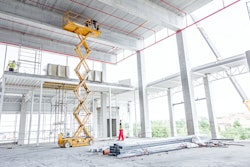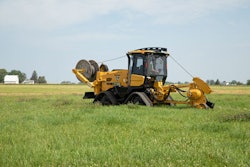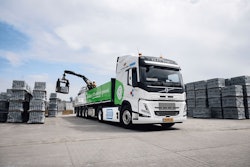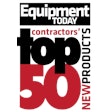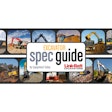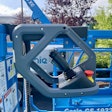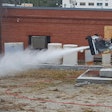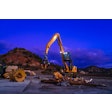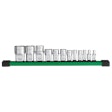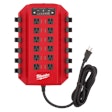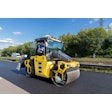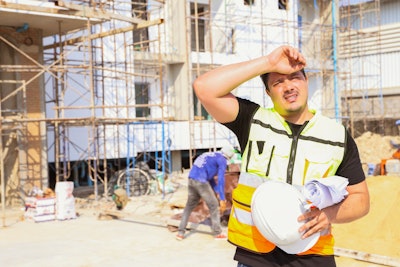
During summer months, construction workers are faced with high temperatures, increased sun exposure and dry work conditions.
And as summer tends to be peak season for the industry, workers are forced to contend with both busy workloads and difficult working conditions. With this in mind, it is important that companies are well equipped to maintain and monitor their machinery, tools and most importantly their workforce in the heat.
Herts Tool Company shares insights on why summer heat impacts machinery and which plant needs the most attention along with advice on how to care for both machinery and workers.
Why does the heat impact construction machinery?
Hot weather can significantly impact construction machinery in various ways that can lead to safety hazards, including:
- Engines overheating: Engines can overheat in high temperatures. Construction machinery often operates under heavy loads, and the additional heat can strain cooling systems, leading to potential engine failures or reduced performance. In extreme cases, this can lead to fires.
- Tire damage: Hot weather can increase tire pressure significantly, which can lead to tires bursting. The heat also accelerates tire wear, reducing their lifespan and increasing the likelihood of punctures or other damage.
- Lubrication issues: High temperatures can also affect lubricants used in machinery. Lubricants can thin in the heat which then leads to them losing their ability to properly lubricate moving parts. This can result in increased friction, wear, and potential component failure.
- Battery performance: High temperatures can also cause batteries to overheat, reducing their capacity and lifespan. This can lead to starting problems or power issues with the machinery as well as safety risks, such as the potential for leakage, smoking, or even a fire hazard.
How regularly should workers check their equipment during summer?
It’s really important to schedule seasonal as well as daily and pre-use inspections of all equipment on-site to check for any weather-related damage to machinery. Pre-use checks are essential and can unearth issues, particularly when carried out by machine operators.
This should include checks such as ensuring proper lubrication, checking tyre pressure, monitoring hydraulic systems, and ensuring cooling systems are functioning correctly. Operators should also take precautions to stay hydrated and take breaks to avoid heat-related health issues.
How to make sure your machinery is operating smoothly in summer?
- Give machines time to cool: Allow machinery to rest and cool down periodically to prevent overheating.
- Adhere to machinery guidelines: Follow the manufacturer's maintenance and operation guidelines strictly to ensure optimal performance.
- Ensure air con is working: Regularly check and maintain air conditioning systems to keep operators cool and equipment from overheating.
- Fill fuel tanks at the end of the day: Refill fuel tanks after daily operations to prevent condensation buildup and fuel contamination.
- Avoid using certain equipment during the peak heat hours: Schedule heavy machinery use for cooler parts of the day to minimize heat stress on equipment.
- Store equipment in the shade where possible: Park machinery in shaded areas to reduce direct sun exposure and internal temperature.
- Implement a proper shutdown procedure: Follow correct shutdown protocols to ensure machinery components cool evenly and safely.
“As temperatures rise to nearly 30 degrees next week, it is crucial that managers, supervisors and site foreman prioritize their work forces’ health and safety. Working in high temperatures and overexposure to UV rays can lead to dehydration, heat stroke, headaches and other illnesses. I would recommend scheduling regular breaks, providing adequate shade and hydration as well as sunscreen and appropriate clothing," said Stefano Lobban, director at Herts Tools.
"It is also essential to ensure further training is delivered to the workforce to enable them to carry out additional checks on equipment in adverse weather conditions and ensure staff are fully aware of any potential risks and adequately trained in how to deal with equipment that may have overheated.”
How to make sure your team is safe onsite in the heat?
- Hydration: Ensure all workers have access to plenty of water and encourage regular hydration breaks to prevent dehydration and heat-related illnesses.
- Shade and rest breaks: Set up shaded rest areas and schedule frequent breaks, especially during the hottest parts of the day, to allow workers to cool down and rehydrate.
- Protective clothing: Provide lightweight, breathable, and light-colored clothing, along with hats and UV-protective gear, to minimize sun exposure.
- Adjust work schedules: Whenever possible, arrange work shifts to start earlier or later in the day to avoid peak heat hours, reducing the risk of heat stroke or exhaustion.

